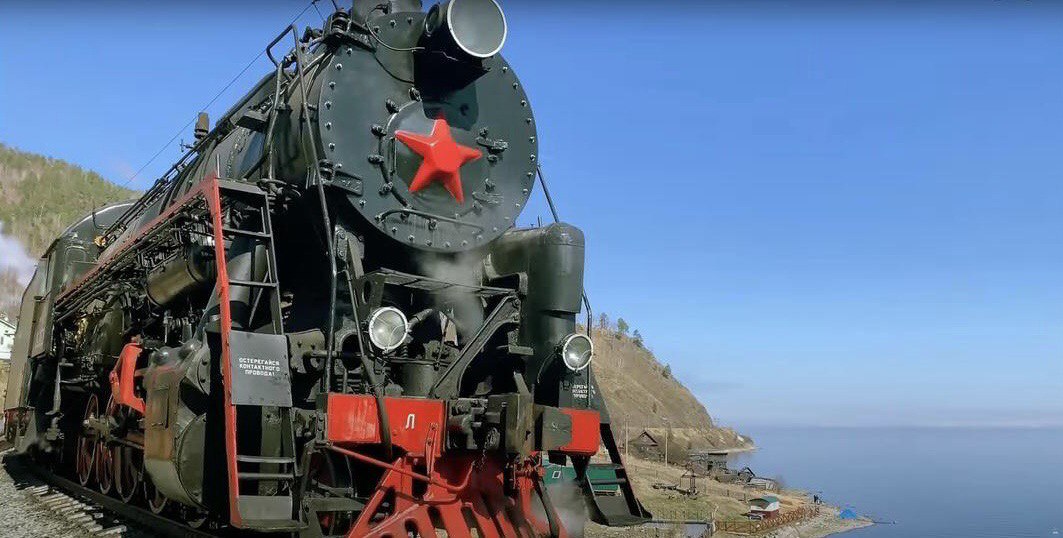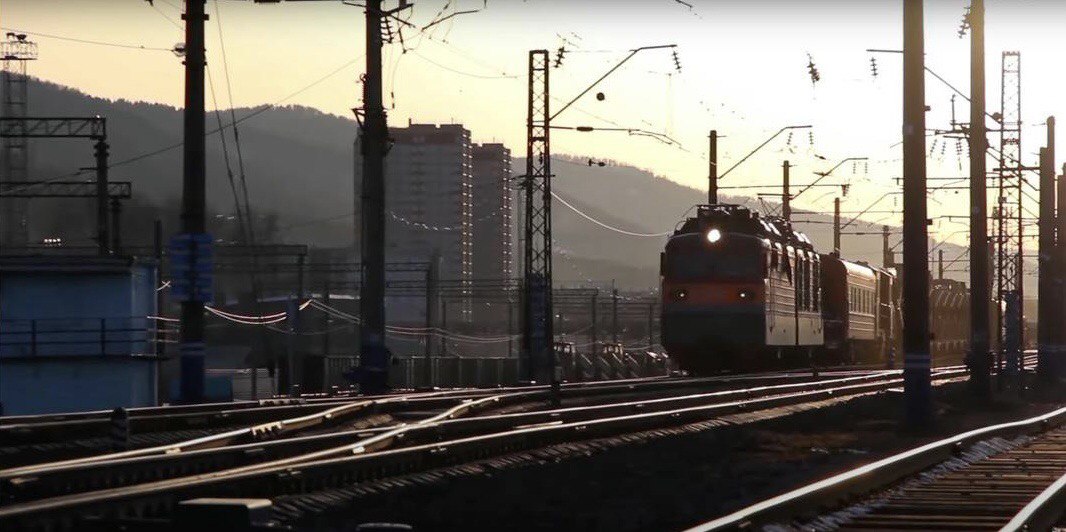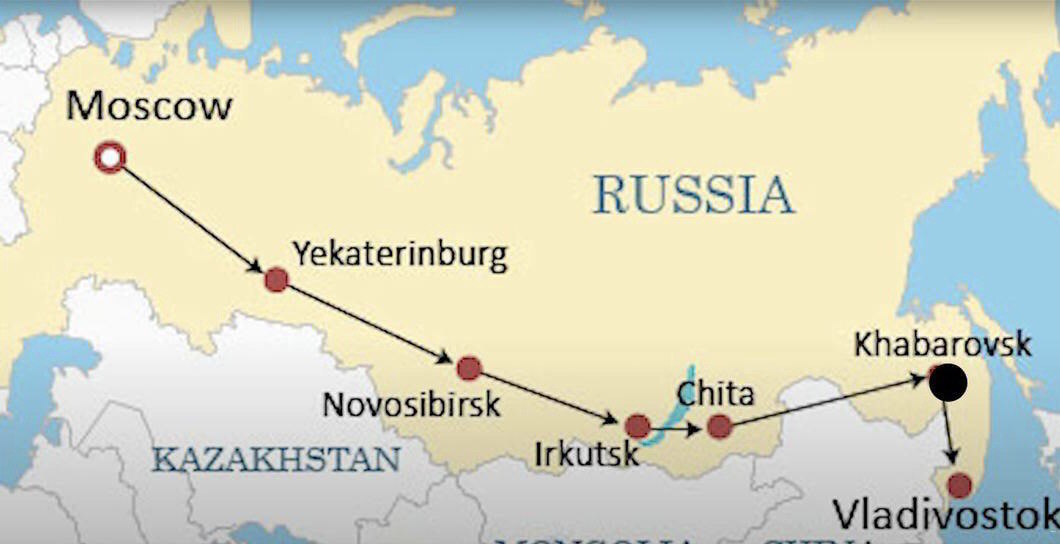Introduction

Spanning the breathtaking and varied landscapes of Russia, the Trans-Siberian Railway stands as a testament to human ingenuity and ambition, inviting adventurers to embark on an extraordinary journey across continents.
A Historical Marvel
The railway’s historical significance is deeply ingrained in its tracks, which connect Moscow to Vladivostok over an astounding distance of 9,289 kilometers, making it the longest railway line in the world. This engineering feat not only showcases remarkable human perseverance but also symbolizes the bridge between East and West, igniting economic transformation and cultural exchange across vast distances.
Engineering Triumphs and Challenges
Constructed between 1891 and 1916, the Trans-Siberian Railway emerged from an era marked by monumental change and ambition. It traverses some of the harshest terrains on Earth, overcoming formidable engineering challenges to unite isolated markets into a cohesive trade artery. The railway not only facilitated economic integration but also fostered cultural interactions among diverse communities along its route.
Despite its successes, the construction faced significant obstacles. The tracks had to navigate treacherous landscapes and endure extreme weather conditions, raising environmental concerns about the balance between progress and preservation. Nonetheless, this iron artery became a crucial component of Russia’s imperial ambitions, born from both dreams of expansion and strategic necessities.
Strategic Importance of the Railway

In the late 19th century, Russia was driven by a relentless pursuit of industrial growth and territorial expansion. As Western powers extended their influence in East Asia, Russia sought to assert its dominance through the Trans-Siberian Railway. This ambitious project was not merely about commerce; it served as a vital link that connected Siberia with Central Russia, enhancing a strategic influence while promising untapped riches from Siberia’s resources.
The vision for this monumental undertaking was championed by two key figures: Tsar Alexander III and his advisor Sergei Witte. Alexander III aimed to weave together Russia’s vast territories into a unified empire, while Witte recognized that railway diplomacy could elevate Russia’s global standing. Together, they orchestrated the creation of this remarkable railway system, which would ultimately reshape Russia’s destiny on the world stage.
Before the grand vision of the Trans-Siberian Railway could be realized, earlier railway projects laid the groundwork across the Russian landscape. Among these, the Irkutsk-Chita project stood out as a significant initiative, reflecting Russia’s ambition to connect its remote territories.
In the 19th century, the vast expanses of Siberia attracted explorers and engineers, challenging them to conquer its untamed wilderness. However, formidable engineering challenges loomed large; the rugged terrain and harsh climate tested the resolve of those who envisioned iron rails traversing Siberia. The construction of this railway was a Herculean task, fraught with obstacles that pushed the limits of human endurance and ingenuity. From treacherous permafrost to sprawling rivers, each geographical barrier demanded innovative engineering solutions.
The labor struggles were palpable as workers braved harsh conditions, their efforts contributing to the historical significance of the railway. This monumental endeavor not only connected a continent but also forged a legacy of resilience.
In the spring of 1891, anticipation filled the air as Tsarevich Nicholas, later Tsar Nicholas II, stood in Vladivostok to inaugurate this ambitious project. The Trans-Siberian Railway promised to be a historical milestone, interweaving engineering innovations through vast landscapes. Despite challenges such as frozen winters and impassable terrain, its political implications were profound, binding the empire’s farthest reaches. Each rail laid fostered cultural connections among diverse communities, symbolizing national ambition and uniting east and west with iron threads of progress.
Overcoming Obstacles
Lake Baikal emerged as a formidable natural barrier during the construction of the Trans-Siberian Railway, demanding both ingenuity and resilience from engineers. The railway’s creation marked significant milestones in history, intertwining technological advancements with nature’s challenges. While Lake Baikal posed environmental concerns, it also facilitated cultural exchanges among diverse workers who came together to tackle this obstacle.
As iron rails met the lake’s edge, the Trans-Siberian Railway became a testament to human tenacity and engineering prowess.
Amidst Siberia’s harsh winters, remarkable innovations emerged in the form of ice-breaking train ferries—namely the Baikal and Angara. Designed under Stepan Makarov’s visionary guidance and constructed in Newcastle upon Tyne, these ferries addressed significant engineering challenges by enabling smooth passage through thick ice. This technology represented not just an engineering feat but also human ingenuity against nature’s relentless grip.
While these ferries served their purpose effectively, the construction of the Circum-Baikal Railway provided a more enduring solution to crossing Lake Baikal. This engineering marvel offered an alternative to unpredictable ferry services by carving a path through rugged terrain with innovative techniques such as tunnels and viaducts. Beyond logistics, this railway held strategic importance by linking crucial regions and fortifying the Trans-Siberian route.
Cultural Connections Across Continents

The Trans-Siberian Railway, a testament to Soviet strength, also paved the way for the Trans-Mongolian line, an ambitious extension that navigated the rugged landscapes of Mongolia. This project encountered significant challenges, including harsh climates and treacherous terrain, which necessitated continuous engineering innovations.
Beyond its engineering achievements, the railway served as a vital link between distant cultures, profoundly impacting the region’s cultural landscape. Its historical significance is underscored by its role in opening Mongolia to global trade and connectivity, reshaping economic dynamics.
The enduring story of the Trans-Siberian Railway intertwines legacy with modernity, showcasing human determination and ambition. Stretching across vast terrains, it facilitates cultural exchanges and connects diverse communities. Its economic influence is substantial, as goods traverse its iron path, fostering trade and prosperity. Additionally, modern tourism thrives along this route, attracting travelers eager for adventure and discovery.
However, environmental concerns pose challenges, emphasizing the need for mindful preservation of the pristine wilderness it traverses. Politically, the railway functions as a crucial artery, enhancing connections within Russia and beyond. The Trans-Siberian Railway stands as a monument to its lasting impact and relevance.
Awe surrounds the legacy of this engineering marvel, which has evolved from mere steel tracks into a cultural icon. It enriches communities and weaves together the diverse mosaic of Russia with unwavering resolve. Its geopolitical significance is evident, bridging continents and altering historical trajectories. Each chug of the locomotive echoes tales of ambition, reflecting the dreams of a nation that forged its iron spine through adversity.
Conclusion
The journey of the Trans-Siberian Railway inspires as a symbol of human ambition and relentless progress. Spanning vast landscapes, it forges cultural connections that intertwine diverse communities into an intricate fabric. The railway’s economic impact breathes life into remote regions while inviting travelers to engage in unique experiences steeped in history.
Amidst its triumphs, environmental concerns remind us of the delicate balance required to sustain such marvels. Historical anecdotes resonate along the tracks, whispering tales of determination and dreams fulfilled. This iron spine endures as a symbol of discovery.
As the rails unfurl across Russia’s vast expanse, they witness a monumental chapter in the nation’s history that forever altered its course. The Trans-Siberian Railway redefined landscapes, facilitating cultural exchange and fostering economic development. It bridged immense distances, weaving disparate regions into a cohesive whole and enhancing Russia’s geopolitical significance.
The transformative impact of this railway is profound; it serves as a conduit for progress that unlocks untapped potential and ushers in an era of connectivity. Through its iron veins flows the lifeblood of a nation, shaping its destiny for generations to come.




